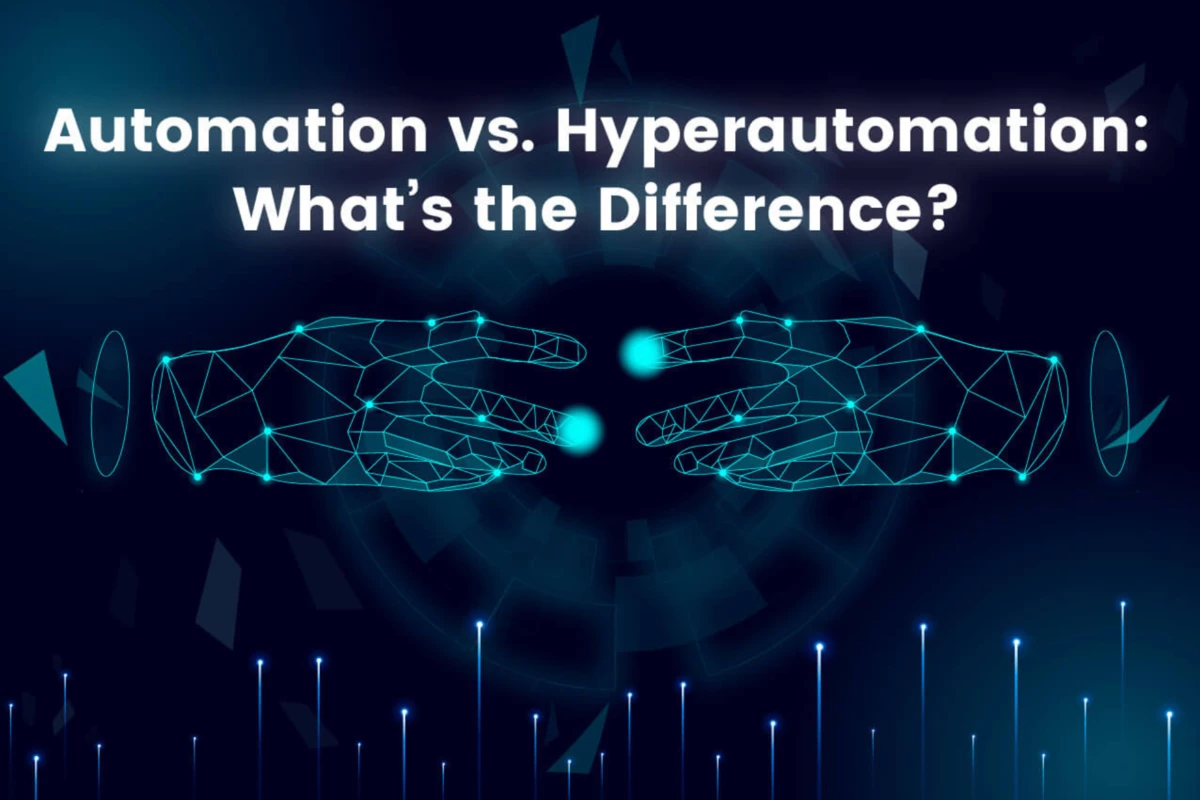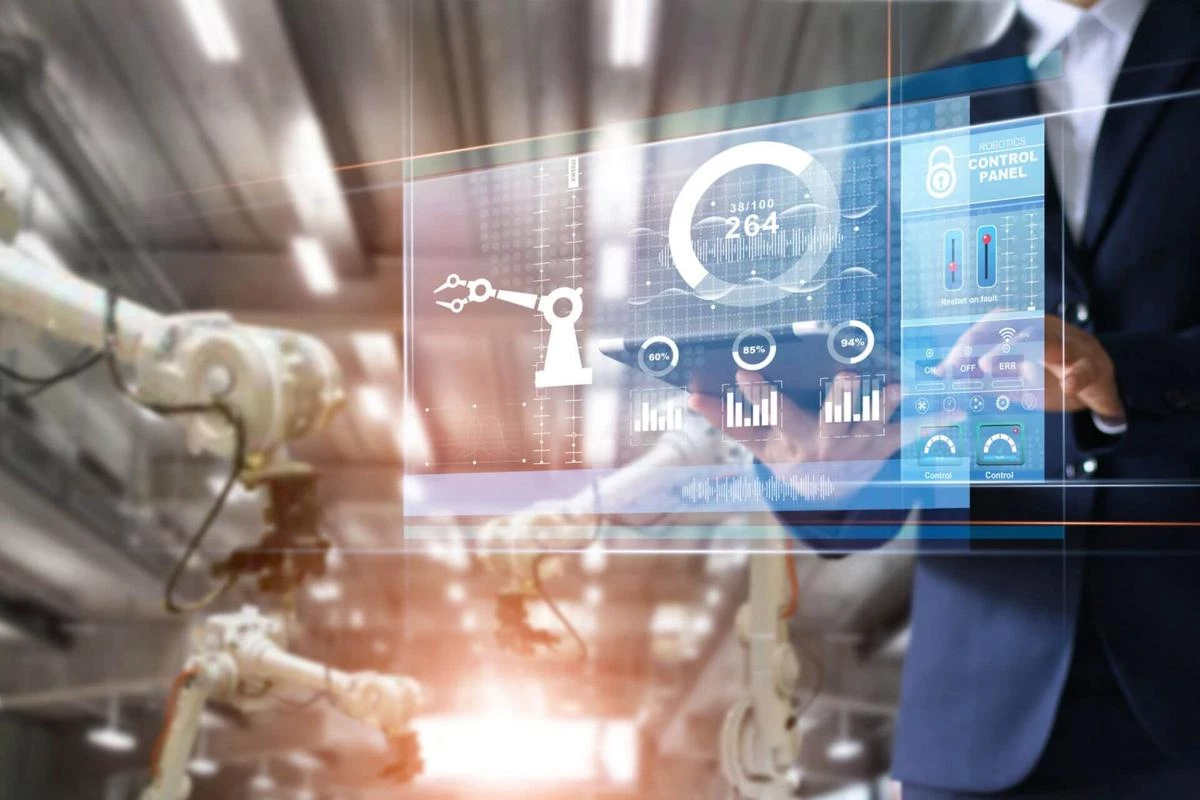Businesses need to be sufficient with dynamic speed, inflexibility, and effectiveness that only automation can help achieve. Specialists today are discussing the advantages of the two types of digital process automation. Automation and Hyperautomation, while most others consider the difference between the two.
Automation and hyperautomation are from the same cloth. Each result gives businesses exactly what they crave Technology. That yields quick and more financially responsible processes that are freer of error.
That said, hyperautomation takes automation one step further. With it comes fresh layers of advanced technologies that cultivate end-to-end automation processes, streamlining workflows and enabling divisions to remove some tedious day-to-day tasks.
Are they synonymous terms, or is there a difference between them and the benefits they cost to businesses?
What is Automation?
Before understanding Hyperautomation, we must know what automation is. Primarily when we talk about automation in this environment, it refers to the automation that goes on within computers and not the automation performed by robots in factories.
Automation performed within a computer gets divided into two primary groups: test automation and RPA. These two types of automation serve different purposes but offer the same advantages; to allow processes to finish quickly, more efficiently, and with advanced accuracy. In a business position, automation contributes to advanced productivity, lower costs, and lower risks.
What is hyperautomation?
According to Gartner, hyperautomation applies advanced technologies, including artificial intelligence( AI) and machine learning (ML), to automate processes and augment humans. Hyperautomation extends across a range of tools that automate but also refers to the complication of the automation( i.e., discover, analyze, design, automate, measure, supervise, reassess.)
In simple words, hyperautomation is an expansion of automation; it adds a layer of advanced technology to automation, which makes it possible to do more with the technology.
Technologies in the automation sector get resolved into two types, i.e., manual and automated. Manual automation is when a person completes the task manually, while a computer does robotic automation without user orders. These two kinds of automation operate to serve different objects but deliver the same benefits. These include enabling processes to be executed quickly, effectively, and directly. At a company position, automation caters to elevated productivity situations and lower costs and risks.
In simpler terms can be said that automation constitutes aspects similar to Robotic Process Automation( RPA), Artificial Intelligence( AI), and Machine learning( ML). On the other hand, hyperautomation is a business-centric, ordered system that associations use to quickly determine and automate the maximum possible business and IT operations. Therefore, automation is frequently considered a subset of the efforts accepted toward hyperautomation.
Moving on to hyperautomation, it’s a term for depicting an automation process that goes conventional automation technologies and practices. Hyperautomation gets classified as either complete or partial automation.
Where automation and hyperautomation can encourage business process optimization?
At their respective principles, automation and hyperautomation are more advanced offshoots of robotic process automation technology. They get equipped with technologies similar to artificial intelligence, machine learning, process mining, digital twins, and business process operation.
Automation is vital for any digital transition, but companies have long known that enterprise automation RPA tools have limitations. Chief among them is the incapability to automate business processes via unstructured data.
Hyperautomation was developed to break this problem and aims to address the most complicated business processes. By using it, associations can automate tasks that used to be manual, adding employee retention and productivity as well as perfecting the client experience.
With its advanced technologies, hyperautomation is most effective in the most complex business processes, including those where you might have multiple services or places. Some of these include:
Accounts payable and order operation
Hyperautomation can exclude snags in areas that typically depend on manual labour and human knowledge. With its focus on documenting, responding, and paying out checks, accounts payable is a risk of inefficiency, errors, and out-of-control costs. Order operation( i.e., reacquiring and extracting client information) can present some of the same challenges, so both are ripe for hyperautomation.
Process mining
Still, you’re probably using or allowing of using process mining software to assess it if you want to know the current state of your association. With hyperautomation, there is an accurate view of how your processes presently operate. By process mining, you obtain a vision of everything, allowing you to automate the perspective.
Live agent Replacement
You can exclude the manual work of live agents and introduce bots with hyperautomation. The execution process discovers your business processes and creates bots to automate them. These bots will also come as the first points of communication for some visitors, helping users navigate support reports and knowledge bases, order products or services, and manage accounts.
Of course, you might have areas in your company that fall right on the line between requiring automation and hyperautomation, and laborious to figure out which is best. But guessing the optimal approach for your business enables you to fit your company’s automation requirements.
Differences Between Automation and Hyperautomation
Hyperautomation is different from traditional automation or RPA in the following ways:
It resembles human action more nearly than RPA
The ultimate thing of automation is to bring human intervention down to a bare minimum, so there are lesser errors, lesser standardization, and an optimized headcount. Hyperautomation leverages AI to mimic human action more nearly — for instance, if it detects an error or an issue with a file or dataset, it can connect with a system or bring a human into the loop. The process doesn’t stall just because there’s an exception.
It approaches a process as part of the big picture.
An RPA bot is the purpose of completing one task at a time. A data entry bot can only get information from a fixed source and transfer it to a set destination system. In distinction, hyperautomation can be large-scale integrations that approach each process as part of the bigger picture. As a result, hyperautomation operates via connected workflows and not through standalone bots.
It democratizes automation use and encourages wider adoption.
Traditional automation is still a specialized process, taking heavy IT involvement. Businesses that aren’t previously digitally mature or don’t have access to an IT team in-house could struggle with RPA keeping in the long term. One answer to this is outsourcing RPA to a vendor — or you could implement hyperautomation, which is low code/ no code. Indeed business users can define workflows, set up integrations, specify exceptions, etc., and the entire team( also new workers) can start using hyper-automated processes right now.
Its goal is value addition and not just effectiveness
At its core, RPA saves you time, risk, and costs but can not induce value. Hyperautomation can open up new openings for a provider. For case, you can set up a hyperautomation- enabled workflow that adapts to all new kinds of documents and regulations so you can expand products into new regions.
How to Gain from Hyperautomation in 2023
Gartner predicts that spending on hyperautomation will continue to increase over the coming years, and by 2024, companies will be suitable to lower costs by 30% using this technology alongside process reimagination.
Previously, the banking, financial services, and insurance( BFSI) sector the top three hyperautomation users across the globe. To gain from this technology, companies must begin with a strategic rethink, asking how important my process landscape can I automate.
It has to be answered holistically by setting up the foundations of a connected and future-ready business that can embed new automation factors as it scales.
Are you looking to borrow hyperautomation in 2023? At Outworks Solutions, our subject matter experts combine industry knowledge with digital skills to give end-to-end results. Contact us to get started on your hyperautomation journey today.



